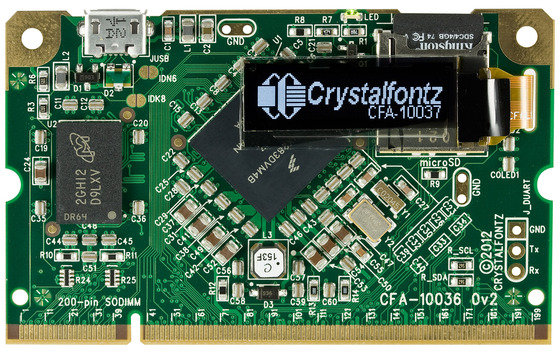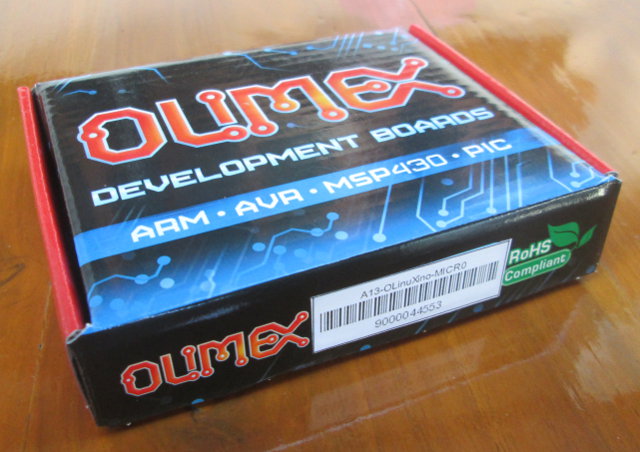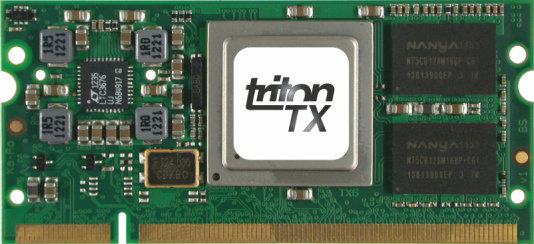Nearly 2 years ago, the Linux Foundation’s Consumer Electronics (CE) working group created the Long Term Support Initiative (LTSI) Linux kernel for consumer electronics devices in order to have a common stable platform released every 2 years, and share the kernel development work among competing companies including Hitachi, LG Electronics, NEC, Panasonic, Qualcomm Atheros, Renesas Electronics Corporation, Samsung Electronics, Sony and Toshiba. Last week, the CE working group has released LTSI 3.4 kernel, based on Linux 3.4.25 kernel release and including several backported features from newer kernels including: The Contiguous Memory Allocator (CMA), which is extremely useful for embedded devices that have very limited hardware resources and will better handle the large memory requirements of multimedia applications. CMA originally was merged into the 3.4.0 kernel release, but its functionality was quite limited. Since then, the feature has been significantly improved in the kernel.org releases and those fixes have been added to […]
LTSI (Long-Term Stable Initiative) Status Update – ELCE 2012
Tsugikazu Shibata, chief manager of OSS promotion center at NEC, gives a status update for LTSI, an LTS kernel for the consumer electronics market at ELCE 2012. Abstract: LTSI (Long-Term Stable Initiative) had been established October 2011 as an activity of CE Working Group of The Linux Foundation. LTSI will maintain Linux kernel for long term and stable for use of Consumer Electronics industry to share common cost and also help industry engineers to merge their patches into upstream. This talk will update latest status of LTSI project and discuss about next step such as how the development process going on and what version of Linux kernel will be maintained for long term and stably use. This talk will be intended to provide information for managers and engineers in the embedded industry and not necessary to have specific knowledge. Agenda of the talk: Status of Linux kernel development and maintenance […]
Modular Graphics on Embedded ARM – ELCE 2012
Philipp Zabel, kernel developer at Pengutronix, discusses about graphics and video support for Linux on embedded SoCs at Embedded Linux Conference Europe 2012. Abstract: Porting Linux to new ARM based application processors has recently become easier than ever: the kernel gained many new frameworks like common-clock, oftree and pinmux. However, things get complicated when it comes to high end embedded graphics units.Those graphics systems tend to be composed of a multitude of on-SoC functional blocks that can operate on shared graphics buffers and video signals, as well as off-SoC encoder/converter chips that can be mixed and matched with any SoC.The old framebuffer is certainly not enough for today’s hardware any more, while modern frameworks like KMS and DRM have their own hassles on non-PC style graphics systems.The talk outlines issues we found while working on graphics and video support for the MX53 and MX6 CPUs and gives suggestions for possible […]
Crystalfontz CFA-10036 ARM9 Embedded Module Running Linux 3.7
Crystalfontz America, a supplier of LCD and OLED display modules used in embedded systems, has launched a Kickstarter campaign to fund manufacturing and lower the cost of a system-on-module powered by Freescale i.MX28 featuring a small 128×32 OLED display, and lots of GPIOs. Here are the specs of CFA-10036 SoM: Processor – Freescale i.MX283 @ 454MHz (Optionally i.MX287) System Memory – 128 MB DDR2 (Optionally 256MB) Storage – microSD socket (Up to 64GB) Interfaces: 2x CAN interfaces 4x synchronous serial ports 10/100-Mbps 802.3 Ethernet MAC USB 2.0 OTG (connected to microUSB AB on CFA-10036. Used for development purpose) USB 2.0 host controller and PHY 5x UART plus one dedicated debug UART 2x I2C (OLED shares one of these) LCD, touch screen, keypad, and rotary encoder support RTC with 32KHz crystal (requires continuous power) 4x 32-bit timers 8x PWM 5x 12-bit 428KS/s ADC channels 1x 12 bit 2MS/s ADC channel 91 GPIO […]
Olimex A13-OLinuXino-MICRO Development Board Unboxing And Review
Every Friday, Olimex organizes an online competition where they give away one of their board. They’ll ask a (usually simple) technical question on their twitter account at 22h00 (GMT+7), and all you have to do is to reply to their tweet with the correct answer within one hour. The winner is then selected randomly with random.org. There are usually 50 to 100 respondents so the odds are pretty good. I played a few times, and finally, I was lucky enough to win an A13-OLinuXino-MICRO development board at the beginning of December. I received it yesterday, after UPS took a whooping 15 days to deliver the board (Way to go UPS!). The board can be purchased on Olimex for 35 Euros plus shipping and taxes, or even lower if you order larger quantities. A13-OLinuXino-MICRO is a stripped down version of A13-OLinuXino-WIFI with the following specs: SoC – AllWinner A13 Cortex A8 […]
Linaro 12.12 Release with Linux Kernel 3.7 and Android 4.2.1
Linaro release 12.12 has just been announced, and includes Linux Kernel 3.7 and Android 4.2.1. The tracking version (stable release) uses Kernel 3.4.22. This release upgrades Android to version 4.2.1, Ubuntu images are now based on Ubuntu 12.10 (Quantal Quetzal) and Linaro U-Boot 2012.12 has been released with support for Origen 4 Quad and Arndale boards. Further improvements have been done for OpenEmbedded ARMv8, where they replaced the php Apache module by php-fpm among other things. On the kernel side, USB drivers have been refactored, and a kernel size analysis have been performed on several platforms. The power management team has mainly worked on big.LITTLE IKS and MP implementations, and it’s the first time LEG (Linaro Enterprise Group) is included in the release, and they worked on UEFI for ARM, GRUB for U-Boot, and provided a Ubuntu server image for Arndale board which can boot via UEFI or UBoot. Here […]
Linux 3.7 Release
Linus Torvalds has announced the release of Linux Kernel 3.7: Whee. After an extra rc release, 3.7 is now out. After a few more trials at fixing things, in the end we ended up reverting the kswapd changes that caused problems. And with the extra rc, I had decided to risk doing the buffer.c cleanups that would otherwise have just been marked for stable during the next merge window, and had enough time to fix a few problems that people found there too. There’s also a fix for a SCSI driver bug that was exposed by the last-minute workqueue fixes in rc8. Other than that, there’s a few networking fixes, and some trivial fixes for sparc and MIPS. Anyway, it’s been a somewhat drawn out release despite the 3.7 merge window having otherwise appeared pretty straightforward, and none of the rc’s were all that big either. But we’re done, and […]
Direct Insight TRITON-TX6Q System-on-Module Powered by Freescale i.MX6Q
Direct Insight, a British company, has recently announced the TRITON-TX6Q, a SODIMM system-on-module based on Freescale’s iMX6Q quad core Cortex-A9 processor running at 1 GHz with 1 to 2GB RAM and 128 MB flash. This module targets embedded applications including medical devices, digital signage, and industrial multimedia products. Here are the TRITON-TX6Q specifications: SoC – Freescale i.MX6Q 4x ARM Cortex-A9 up to 1GHz + Vivante GC2000, GC355 and GC320 graphics co-processors System Memory – 1GB or 2GB 64-bit DDR3 @ 1066MHz Storage – 128MB NAND Flash, 2 SD card receptacles on baseboard Display Connection – LCD controller 24-bit parallel up to 1080p, dual LVDS (optional). Resistive & capactive touch screen support. Connectivity – Ethernet 10/100 BaseT with PHY on module. USB – USB Host + USB OTG Peripherals and Interfaces: Up to 5x UART (RS232) with pin sharing 2x I2C, 1x 1-wire and 2x SPI interfaces SSP (synchronous serial /digital audio): […]






